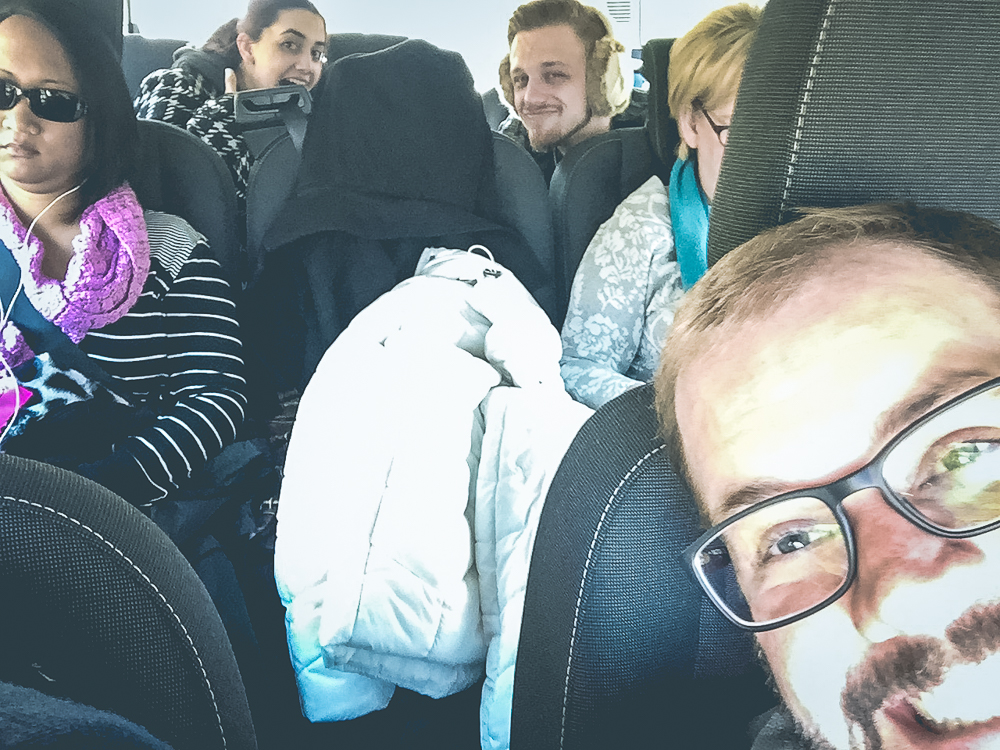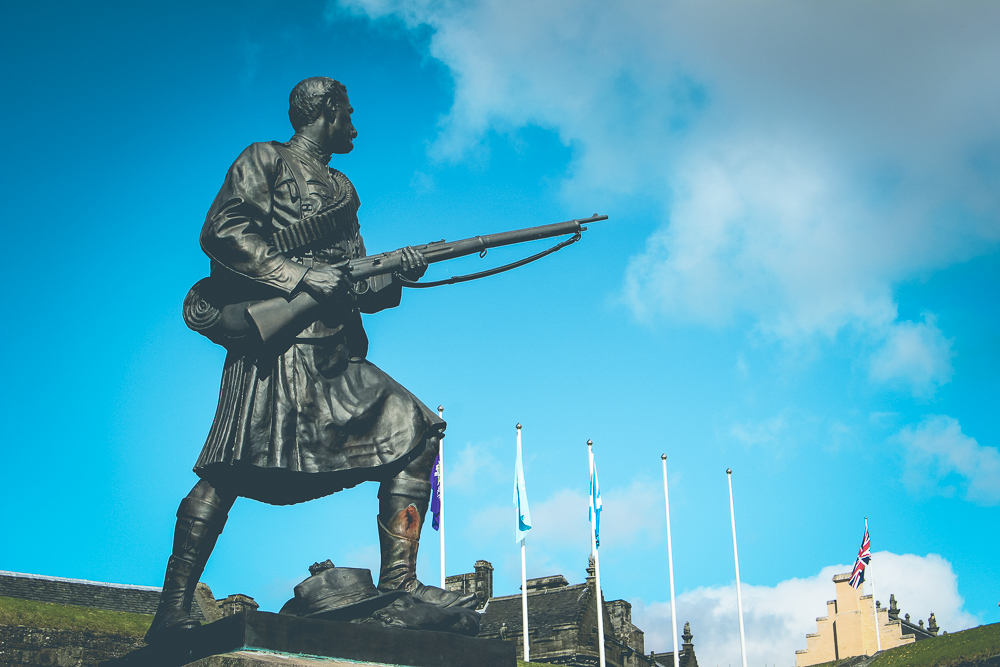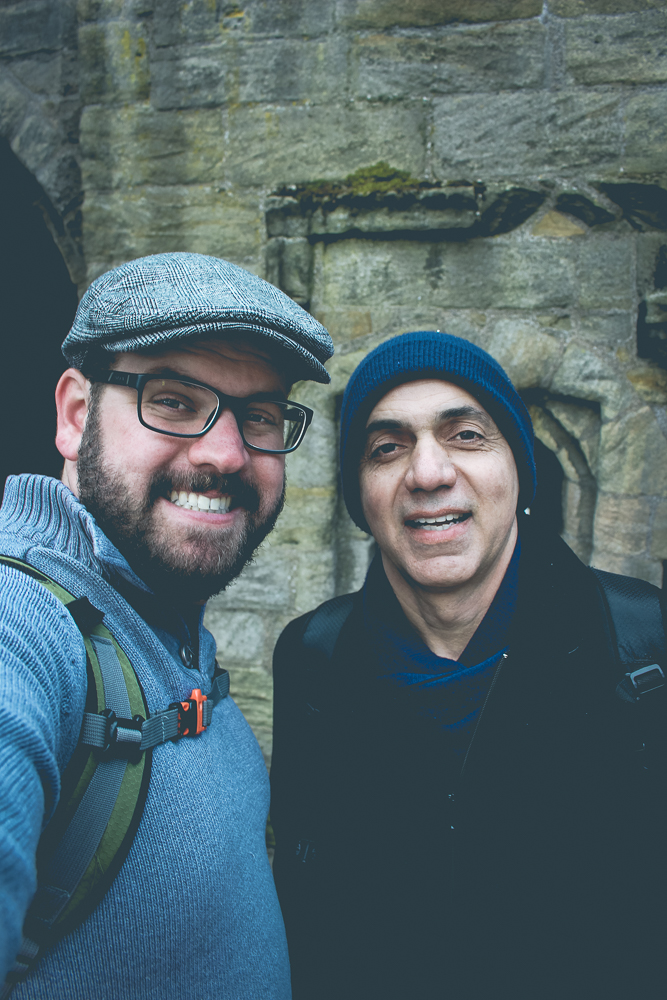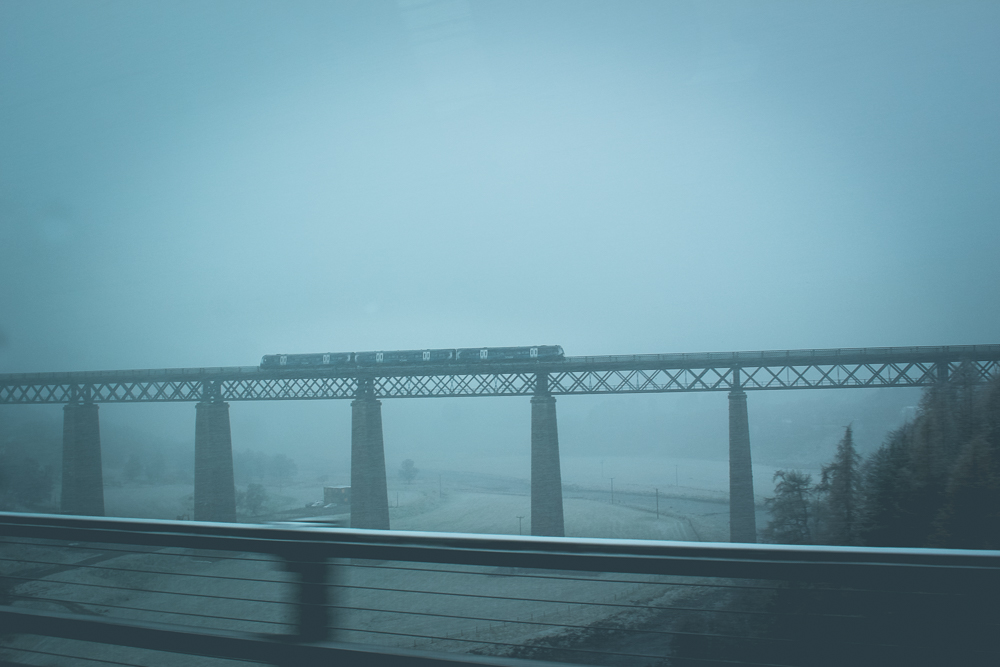There are moments during your travels when you come face-to-face with the places you have been inspired by your whole life and, as satisfying as it might be, you can't shake the feeling that there’s something just a little bit fraudulent about it.
It’s the moment at the sweeping Tunnel View vista, in Yosemite National Park, when you realize that every photo that has ever captured the lookout’s sense of grandiose solidarity was literally 5 feet from a parking lot bustling with tour busses and mini-vans. The moment after 60 minutes of navigating the infinite corridors of Paris’s Louvre Museum in search of the damn Mona Lisa, when your naive assumption that you might actually have a few fleeting moments to study her detail dissolves at the sight of 200 people gathered around the 2-foot tall painting. It’s the moment when you feel like the lowest idiot for having wondered if you might experience what you see in every professional photo of Kyoto’s Fushimi Inari Shrine—with its thousands of tori gates surrounding open pathways that stretch on quietly without a soul—as you funnel through the said gates, shoulder to shoulder, in a rushing river of disappointed tourists.
But then, there are moments that precisely match every hope you have for a place. Moments when, even when everything seems to be going wrong, you walk away from a place transfixed by how breathtaking and magical it was. This is the type of moment I experienced two years ago in the Scottish Highlands.
A few years ago I visited Scotland with Cindy, my parents, my sister, and her then-boyfriend. We started in London and then took a train up to Edinburgh where we would explore for two days. Splitting these days, I budgeted time for a short, two-day dash across the Scottish Highlands. I had high hopes for these 48 hours, expecting to experience 6 to 8 destinations in the short span. I assumed that the mere 200 mile sprint across the region would be easy and offer plenty of room for sightseeing. I was wrong. But ultimately, it wouldn’t matter; I fell in love with the place. This is what happened—
Our first day started when we picked up our six-passenger van at the Edinburgh Airport, a mighty-large vehicle for Scotland’s little country roads, I might add, but big enough for everyone and our luggage. With my father at the wheel, acclimating to both a manual transmission and driving on the left-hand side of the road, we sputtered through a few roundabouts and then clumsily got up to speed on the motorway north. Serving in the capacity of official navigator, I directed my father through the next 30 miles, four roundabouts, and a few dodgy clearances before arriving at the first destination of the day: Stirling Castle.
The town of Stirling and the castle which shares its name are tremendously important places in the history of Scotland. This history is fascinating, and dense, and I will not be going into it too deeply here. But there’s a few critical takeaways:
First, the town, once the capital of Scotland, is centrally located and geographically significant. Importantly, the area was the first “bridging point” where one could cross the River Forth, making Stirling the critical access point on a journey north to the Highlands. Scottish poet Alexander Smith wrote of the town: “Stirling, like a huge brooch, clasps the Highlands and Lowlands together.”
Second, the town and castle Stirling play a major role in the Wars of Scottish Independence, fought in 1296-1328 and 1332-1357 between the English and the Scottish. This includes the Battle of Stirling Bridge, a crushing defeat for the English forces that were out strategized and out maneuvered by the Scottish who used the bridge to their advantage. This battle was featured, but entirely misrepresented, in the film Bravehart for, among many reasons, the lack of a bridge. During this war, Stirling Castle also fell to the English in a major siege, one of eight in its history.
Finally, Stirling Castle was a Scottish royal residence. The castle was the birthplace, place of death, and place of crowning for several Scottish Kings and Queens, including Mary, Queen of Scots. Many exhibits at Stirling Castle were focused on Mary and her fascinating story.
After wandering around the castle courtyards for a bit, we noticed that a guided tour was preparing to step off into the Castle. We joined the group to hear a young, passionate docent charge into stories about the castle and its significance. The tour extended our stay at Stirling beyond the time that I had budgeted for but it was the defining experience that helped make the stop significant for us.
When the tour concluded, we made one final round about the castle grounds. Though the sky remained blue, grey clouds drifted overhead and would occasional drop small snow flurries upon us—a curious sensation for our Southern Californian party. Soon, we regrouped, bathroomed, and were back to the van.
Our intention was now to drop into town and find a place to dine. The day was already approaching noon and the complimentary light breakfast from our Edinburgh hotel was burning away. But driving around the old, small roads was particularly difficult for this sextet of lost tourists in a gargantuan van. We struggled to find a place to park, let alone a place to dine. A few close calls and our tempers began to flare. Mine, at least.
Eventually, we threw in the towel and returned to the motorway in search of the comforts of the open road. There, we saw a sign for a pub in Dunblane, the next town over, and decided to settle. I was tremendously glad that we did. There, we found a convenient car park (parking lot) off the main road and strolled right up to the Riverside Pub, Kitchen, and Coffee House. I had a sandwich and a beer (a Punk IPA from local brewer BrewDog) and any stress or frustration I felt simply peeled away. This attitude adjustment allowed me to realize that we were in a pretty amazing place. Dunblane is a small town that straddles the Allan Water river and featured little parks and shops. It was a place I could imagine cozying up and writing a book or something.
Of course, any positive feelings I had gathered evaporated at the notion that I would be returning to the van. Sitting in the front-left chair (which would be the driver’s seat in America) created the nauseating feeling of being in a position of control and not being able to do anything. My dad seemed to be getting the hang of driving on the vehicle’s right and yet I, not remotely responsible, was struggling with it.
But these feelings again began to dissipate as we reached the open road. As we drove down the motorway, small farming towns began to give way to more rocky terrain and we felt the spirit of the Highlands come alive. A few wrong turns just added to the feel of getting lost in this mysterious environment and we really got a sense of the place when it started to snow.
The weather during this particular April was unseasonably cold, even for Scotland. In my second entry for Edinburgh, I mentioned that a local weatherman even referred to the weather as a ‘February storm interrupting the country’s march towards summer’. We had expected the cold but we were hardly prepared for snow.
Zipping up the road in this snowstorm was a terrifying and exciting sensation, like that of traveling at light speed—which made our approach into the Highland city of Inverness all the more pathetic when we rolled to a stop in the first block of traffic we’d seen since Los Angeles. Traffic is the Achilles Heel of a system of roundabouts and the stoplight-regulated roundabout at the southern end of the Kessock Bridge was our betrayer. I watched the clock with quiet torment as we lost 30 minutes to Inverness and with it, any optimism that we would make it to our next destination.
When we finally made it out of the roundabout, we continued to hit stop-and-go traffic through the city’s small streets until reaching open road. The A82 highway we were now on weaved between a sizable hillside and the River Ness. As we drove along, the hill continued to grow, as did the river. When the river opened up to a waterbody nearly a mile wide, we knew that we had made it to one of the most famous tourist destinations in all of Scotland: the Loch Ness.
Loch Ness is a long, thin lake (over 20 miles long but just 1-2 miles wide) stretched along the top half of the Great Glen, a massive ravine etched diagonally across the length of Scotland. The water, both treacherously deep and often obscured in the shade of overcast skies, looked nearly black—it’s hardly surprising that this lake would breed a legend as classic as that of the Loch Ness Monster.
In fact, in homage to the mythical Nessie, there exists the Loch Ness Centre & Exhibition, a museum(?) and shop that presents ‘all known evidence’ of the creature and leaves tourists pondering its existence. The tourist stop is just off the road in Drumnadrochit (don’t ask me to pronounce it!) and we passed it while on the A82. It was one of the “maybe” destinations that was quickly cut when I realized we wouldn’t have time for it, all the way back at Stirling Castle. Besides, our primary destination on the Loch wasn’t a monster, it was another castle, this one perched stunningly on the lake’s shores.
The Urquhart Castle is a 700 year old structure overlooking the center of Loch Ness. The castle grounds looked remarkably beautiful and we were really looking forward to exploring the ruins. However, despite our best efforts to make up the time we had lost, we pulled up to Urquhart Castle precisely 10 minutes after the historical site had closed.
The parking lot was still open and we were able to pull off the road. We gathered for some selfies and were able to grab a few images of the historic edifice from the vacant car stalls. It was a tremendously sad way to experience the destination and yet, there was still something really beautiful about the place.
I was glad that we stopped, but I wore the disappointment of missing the full experience on my shoulders. It was now 5:30pm and most destinations were either closed or laughably far. I had learned that the roads of the Highlands were formidable passages and it would be no easy jaunt to any one place. Weary of this, with only 1 (and one-quarter) of the expected ‘day 1 destinations’ experienced, we decided to throw in the towel and resign to the final 16 mile drive to our night time accommodations.
It was a quiet ride to our hotel. The A82 was particularly thin for the massive van we had rented and my father was forced to slow down or drift into the opposite lane to round some of the trickier turns (a bit nerve-racking for my taste). It took nearly a half an hour to traverse this final length of Loch Ness and it was tiring for us all. However, when we finally arrived, we all perked up when we saw where we would be staying.
I had booked rooms at the Inchnacardoch, or The Inch Hotel, for short. The building was an old hunting lodge along the shore of Loch Ness’s western edge before being turned into a bed and breakfast. We checked into our rooms, dropped off our gear, and then headed down to the dining room. As the first Guests of the evening to arrive, we had the place to ourselves. We placed our orders, were soon served a solid meal, and dined with a relaxing view of the Loch’s southern end.
I also enjoyed a fine beer, this one a brown ale from Loch Ness Brewing. Unbeknownst to me, the brewery was sadly going out of business at the very time of our travels but has luckily found a new lease on life through a new business partnership. Check it out if you’re in the area!
Disheartened by missed opportunities but inspired by the scenery, I thought it would be appropriate to conclude the night with a dram of scotch in the lodge’s bar; Cindy joined me downstairs. The hotel night manager came out to serve me and I professed that I wasn’t really an expert on scotch whisky and that I didn’t know what to order. He was kind enough to pour me several generous samples. I tried scotch from across the map, from Old Pulteney to Laphroaig. It was perfect and even more educational than the pricey Scotch Wisky Experience, the day before. Of course, it didn’t hurt that several of the pours were on the house.
Free drinks aside, the night manager was a really nice dude. He was a Russian guy who made a habit of working gigs for high-commitment 6 month intervals but he would then travel on his 6 months off. I kind of wish I could figure out how to pull that lifestyle off for myself. His next stop was Montana and Texas; the guy had a passion for the “old American West” and wanted to see some rodeos and camp in the American wilderness. Not my cup of tea, but power to him.
We rolled out of the bar and schlepped ourselves up the stairs. As I laid in bed, reflecting on the day, I began to temper my expectations for what destinations we would reach on the next day. And yet, I didn’t despair. The day was challenging, jumbled, and tiresome. But it was perfect.
I expected the next day would be the same.
Thanks for reading about our first day in the Scottish Highlands! I hope to have Day 2 up as soon as possible! In the meantime, feel free to check out more photos from this amazing place in the gallery below!






















































































